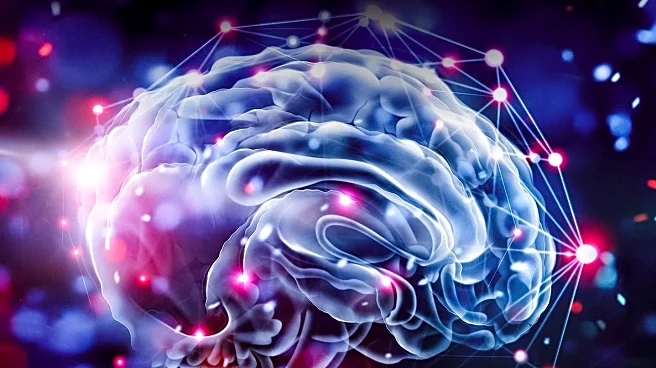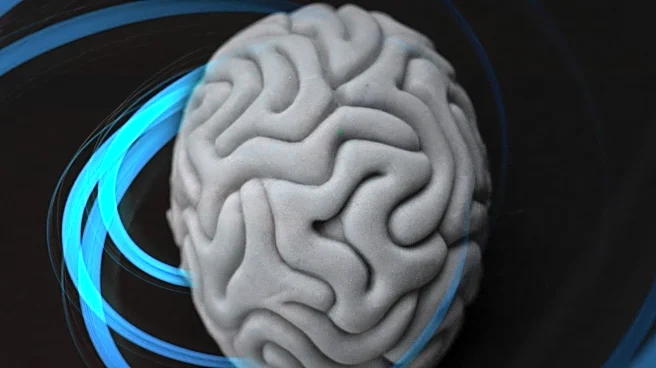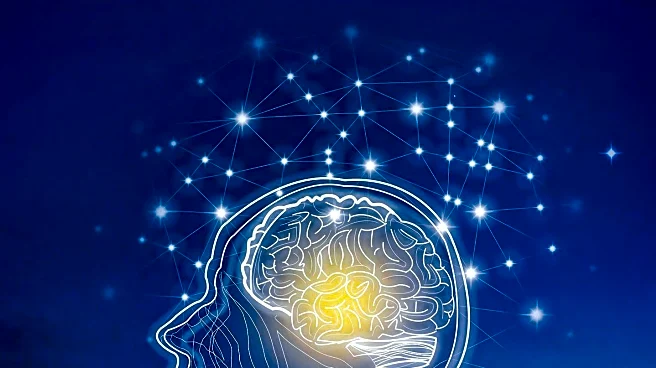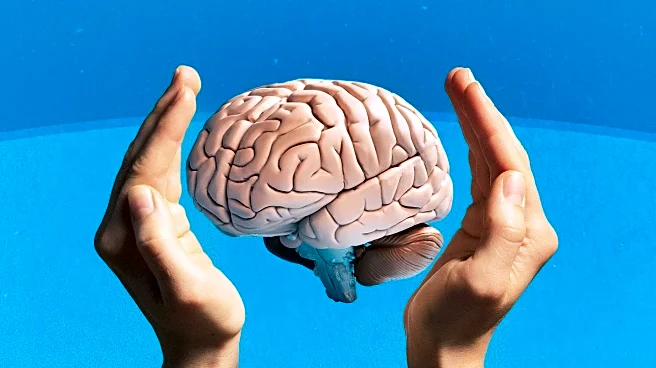What's Happening?
Researchers at the University of Portsmouth have developed a novel brain-scanning method that visualizes anxiety, aiming to improve understanding, diagnosis, and treatment of the condition. The study maps
the biological journey of anxiety in the brain during 'avoid-avoid conflict' situations, where individuals face no-win choices. Using EEG technology, the research identifies specific brain activity patterns associated with anxiety, particularly in the frontal area of the brain. This groundbreaking approach provides a new perspective on how anxiety-related decision-making occurs in the brain.
Why It's Important?
This research offers significant potential for advancing mental health treatment by providing a more objective way to identify anxiety. The ability to visualize anxiety-related brain activity could lead to non-drug approaches, such as brain-based training or psychological therapies targeting specific neural patterns. This could revolutionize the current trial-and-error method of diagnosing and treating anxiety, offering more personalized and effective interventions. The study's findings may also aid in developing new diagnostic tools that complement clinical judgment, enhancing the accuracy of anxiety assessments.
What's Next?
The researchers plan to validate their findings against anxiety-reducing medications and in larger, more diverse samples. Future studies will explore individual variations in brain activity and aim to refine the technology for practical use in mental health clinics. The long-term goal is to develop personalized treatment strategies based on neural patterns, potentially using small EEG devices in clinical settings to support diagnosis and track therapy effectiveness. This research marks a step towards more precise approaches to managing anxiety.
Beyond the Headlines
The study raises ethical considerations regarding the use of brain-scanning technology in mental health treatment. While offering potential benefits, the reliance on neural patterns for diagnosis could lead to privacy concerns and the need for careful regulation. Additionally, the integration of such technology into clinical practice may require addressing disparities in access to advanced diagnostic tools, ensuring equitable treatment opportunities for all patients.











